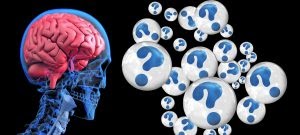[ffb_emptySpace_0 unique_id=”2qlovkfa” data=”%7B%22o%22%3A%7B%22gen%22%3A%7B%22ffsys-disabled%22%3A%220%22%2C%22ffsys-info%22%3A%22%7B%7D%22%2C%22height%22%3A%2225%22%7D%7D%7D”][/ffb_emptySpace_0][ffb_image_0 unique_id=”307lknc6″ data=”%7B%22o%22%3A%7B%22gen%22%3A%7B%22ffsys-disabled%22%3A%220%22%2C%22ffsys-info%22%3A%22%7B%7D%22%2C%22img%22%3A%7B%22img%22%3A%22%7B%5C%22id%5C%22%3A3886%2C%5C%22url%5C%22%3A%5C%22https%3A%2F%2Fhealthsecret.com%2Fwp-content%2Fuploads%2F2020%2F03%2Fbrain-hse-lg-bnr.jpg%5C%22%2C%5C%22width%5C%22%3A805%2C%5C%22height%5C%22%3A183%7D%22%2C%22fullwidth%22%3A%221%22%7D%2C%22link%22%3A%7B%22url%22%3A%22https%3A%2F%2Fthesacredplant.com%2Fstarting-wtbhj%2F%3Forid%3D131647%26sid%3DDS1Brain%26utm_campaign%3DDS1BrainArt%26utm_medium%3Dalzart%26utm_source%3DJoNo%26utm_content%3DBrainLander%26utm_term%3Daff%22%7D%2C%22blank%22%3A%22null%22%7D%7D%7D”][/ffb_image_0][ffb_emptySpace_0 unique_id=”307ni3ug” data=”%7B%22o%22%3A%7B%22gen%22%3A%7B%22ffsys-disabled%22%3A%220%22%2C%22ffsys-info%22%3A%22%7B%7D%22%2C%22height%22%3A%2225%22%7D%7D%7D”][/ffb_emptySpace_0][ffb_paragraph_0 unique_id=”31e9ch8s” data=”%7B%22o%22%3A%7B%22gen%22%3A%7B%22ffsys-disabled%22%3A%220%22%2C%22ffsys-info%22%3A%22%7B%7D%22%2C%22text-is-richtext%22%3A%221%22%2C%22align%22%3A%22text-left%22%2C%22align-sm%22%3A%22%22%2C%22align-md%22%3A%22%22%2C%22align-lg%22%3A%22%22%7D%7D%7D”][ffb_param route=”o gen text”]
By John Malanca
For most of us, memory loss and cognitive decline are considered a normal part of getting older. We use terms like “memory fog,” “senior moments,” and “senility” to describe symptoms of brain diseases that have become an accepted part of the aging process.
So let’s set the record straight:
Memory loss is NOT a normal part of aging.
 Cognitive decline and memory loss (including Alzheimer’s disease) are signs of unhealthy aging. Likewise, the causes of Alzheimer’s are almost always brain damage or neurological decay, both of which are either treatable or preventable. Things like concussions, vascular issues, and even emotional trauma can damage our brains and wreak all kinds of havoc.
Cognitive decline and memory loss (including Alzheimer’s disease) are signs of unhealthy aging. Likewise, the causes of Alzheimer’s are almost always brain damage or neurological decay, both of which are either treatable or preventable. Things like concussions, vascular issues, and even emotional trauma can damage our brains and wreak all kinds of havoc.
There are many other contributing factors, but virtually all memory loss and cognitive decline can be attributed to some type of brain cell death. The question is: how do we fix it? The most obvious answer would be to avoid anything that causes brain damage – concussions, emotional trauma, infections, clogged arteries, etc. But that isn’t always realistic. Many times, we suffer these injuries by accident. Other problems can be genetic or triggered by other diseases.
In this article, we want to talk about the underlying causes of Alzheimer’s disease and how the sacred plant may be the key to stopping or even preventing a disease that affects tens of millions of people around the world. Although this is not meant to be used as medical advice, our hope is that a better understanding of Alzheimer’s disease, its underlying causes, and the benefits of the sacred plant can help you and your loved ones live longer, happier, and healthier lives.
But first, let’s talk about what Alzheimer’s disease really is.
What is Alzheimer’s Disease?
Named after the German psychiatrist who first described it, Alzheimer’s disease is the most common cause of dementia and is an irreversible, progressive neurological disorder. Dementia can vary widely in severity, characterized by a loss of cognitive function and changes in behavior, and it is common for more than one form of dementia to manifest in a single patient. For example, Alzheimer’s disease will commonly occur alongside vascular dementia.
Alzheimer’s disease usually develops in people older than 65 years; that is termed “late-onset Alzheimer’s disease.” However, in rarer cases, the disease also can develop in people younger than 65, which is called “early-onset Alzheimer’s disease.”
Alzheimer’s is a progressive disorder, which means that the number and severity of symptoms will increase gradually over time. The main symptom is memory loss, which is often accompanied by symptoms like impulsive behavior, mood and personality changes, hallucinations, and confusion.
How Does Alzheimer’s Disease Work?
While the exact cause of Alzheimer’s disease is not known, we do know that brain damage and neurological decay are present in virtually all dementias. Amyloid plaques have been found in the brains of patients with Alzheimer’s disease and are thought to be one of the reasons behind this disease. Another suspected cause is tau protein tangles.
 These plaques are a unique protein that builds up in certain areas of the brain. The presence of these proteins destroys the cells that control memory and other cognitive functions. This buildup is due to an imbalance in the production of peptides. It is hypothesized that if the balance is corrected early enough, it may be possible to avoid Alzheimer’s disease. But when the proteins continue to accumulate, patients reach a “point of no return,” wherein the neurological damage reaches a level that produces symptoms of dementia.
These plaques are a unique protein that builds up in certain areas of the brain. The presence of these proteins destroys the cells that control memory and other cognitive functions. This buildup is due to an imbalance in the production of peptides. It is hypothesized that if the balance is corrected early enough, it may be possible to avoid Alzheimer’s disease. But when the proteins continue to accumulate, patients reach a “point of no return,” wherein the neurological damage reaches a level that produces symptoms of dementia.
As Alzheimer’s disease progresses, brain tissue shrinks. However, the ventricles, chambers within the brain that contain cerebrospinal fluid are noticeably enlarged. In the early stages of Alzheimer’s disease, short-term memory begins to decline when the cells in the hippocampus degenerate. Patients begin to lose the ability to perform routine tasks.
As Alzheimer’s disease spreads through the cerebral cortex (the outer layer of the brain), judgment worsens, emotional outbursts may occur, and language becomes impaired. Advancement of the disease leads to the death of more nerve cells and subsequent changes in behavior, such as wandering and agitation. In the final stages, people may lose the ability to feed themselves, speak, recognize people and control bodily functions.
From there, memory worsens and may become almost non-existent. Constant care is typically necessary. On average, those with Alzheimer’s live for 8 to 10 years after diagnosis, but the disease can last for as long as 20 years.
Due to exciting new science and research, we are beginning to learn how to avoid (and stop the progression of) Alzheimer’s disease.
Alzheimer’s Disease and Your Inner Healing System
Before we begin, it’s important to understand exactly how the sacred plant works with the brain. For that, we need to take a look at the ECS. The main job of the ECS is to maintain balance (known as homeostasis) within the body as a whole in response to an ever-changing environment such as eating habits, level of stress, air quality, and much more. In addition to being a modulator, it’s secondary responsibilities are to protect and repair cells.
 According to the University of California, Research Initiative, “Taxonomic investigation has revealed that an inner healing system called the “ECS” is incredibly old, having evolved over 500 million years ago. Moreover, it is present in all vertebrates — mammals, birds, reptiles, amphibians, fish, etc.”
According to the University of California, Research Initiative, “Taxonomic investigation has revealed that an inner healing system called the “ECS” is incredibly old, having evolved over 500 million years ago. Moreover, it is present in all vertebrates — mammals, birds, reptiles, amphibians, fish, etc.”
What makes the sacred plant unique are its molecules. What is even more unique is that there is a direct relationship between the body systems of all vertebrates, and the molecules that exist in all three forms of the plant.
There’s evidence that the sacred plant can help with memory, epilepsy, autoimmune disease, brain trauma, stroke, PTSD, depression, and more. This one plant is able to help with nearly all of these afflictions thanks to the ECS. And although the current research is encouraging, we are still in the early stages of our journey. Thirty years ago, scientists had no idea that this extensive system even existed.
The ECS works naturally to prevent and repair damage. For example, after a head injury, there’s an excessive amount of glutamate, which – in excess – can damage neurons. This is called excitotoxicity. Because the glutamate neurotransmitter is a stimulatory neurotransmitter, it causes excitation in the next neuron as opposed to inhibition. This means that it is signaling the neuron to “fire.”
If you have too much glutamate in your brain, you are prone to excitotoxicity. This causes an increase in acetylcholine and leads to excessive levels of anxiousness, fear, insomnia, restlessness, and more, making it imperative that we find a way to bring those levels back down.
The ECS has a natural response built in to reduce the damage. There is a spike in anandamide and 2-Arachidonoylglycerol (2AG) – which are the two primary chemicals. These molecules work to reduce the amount of glutamate being produced, naturally protecting your brain from incurring initial or further damage.
Both phyto- and synthetic molecules can bind to the ECS receptors, altering neural communication via neurotransmitters such as acetylcholine, GABA, dopamine and serotonin. Disrupted activity of the neurotransmitter acetylcholine in the brain, for instance, directly impairs processes such as learning, memory, restful sleep and other cognitive functions. Indeed, many of dementia’s symptoms are linked to disruption in acetylcholine (neuro-muscular) activity and this neurotransmitter is a primary target of current dementia medications.
Although medical research into the sacred plant has been limited in the United States, the research that has been conducted on the treatment of Alzheimer’s Disease with the plant has yielded encouraging results.
A study published in 2008 showed that one molecule in the sacred plant slowed the growth of beta-amyloid. This was seen again in a 2014 study appearing in the Journal of Alzheimer’s Disease. The researchers determined that this molecule was, “a considerably more effective inhibitor of AChE-induced Aβ deposition than the approved drugs for Alzheimer’s disease treatment, donepezil and tacrine, which reduced Aβ aggregation by only 22% and 7%, respectively, at twice the concentration used in our studies.”
Another way that the sacred plant helps stop the progression of Alzheimer’s is the reduction of inflammation caused by the buildup of amyloid plaque. By activating the CB1 receptor sites, this healing plant creates an anti-inflammatory effect which aids in slowing down cognitive decline.
Other molecules have also been shown to prevent brain cell death. Researchers in 2004 noted that the sacred plant contains neuroprotective, anti-oxidative, and anti-apoptotic properties, which is important as it can reduce the neurotoxicity caused by the amyloid buildup in the brain.
Additionally, these molecules have been shown to play a role in promoting the growth of neural tissue in the hippocampus — the area of the brain associated with learning new memories and regulating emotions. Perhaps the most compelling reason for many Alzheimer’s patients to turn to the sacred plant is its ability to improve their quality of life by alleviating many of its symptoms.
This plant has been shown to help by stimulating appetite, boosting motor functions, controlling anxiety, providing restorative sleep, and treating depression. While the research into the sacred plant shows how it can be beneficial in slowing the progression of the disease, the improved quality of life is often reason enough for many patients to pursue a plant medicine protocol.
Preventing Alzheimer’s Disease
 Unfortunately, many people view this plant incorrectly. But the truth is that the sacred plant can be a powerful medicine by protecting against a series of changes in brain chemistry that occur during normal aging.
Unfortunately, many people view this plant incorrectly. But the truth is that the sacred plant can be a powerful medicine by protecting against a series of changes in brain chemistry that occur during normal aging.
PET imaging studies of humans have shown that, after age thirty, the brain gradually displays increasing evidence of inflammation. With advancing age, brain inflammation continues to worsen, leading to a decline in the production of new neurons (a process known as neurogenesis) that are important for making new memories.
Much research energy has been spent devising ways of getting rid of amyloid beta plaques because it was thought that if you get rid of the plaques, you can prevent Alzheimer’s disease. Further research shows, the proteins that form these plaques have other important contributions to brain cell function, so if you get rid of the proteins, there are other severe consequences that are likely to occur.
An alternative approach could be to limit the harmful consequences of having plaques. Mainly, neutralize the damaging free radicals and reduce the harmful inflammatory processes. Fortunately, studies indicate that the prominent many molecules are good at helping with both.
The plant is loaded with potent antioxidants and has anti-inflammatory properties. These are important qualities because brain inflammation is thought to be a major contributor to Alzheimer’s disease. So it’s not surprising that anti-inflammatory drugs, like non-steroidal anti-inflammatory drugs (like ibuprofen) reduce the risk for developing Alzheimer’s.
But these drugs, especially their chronic use, can damage the kidneys. On the other hand, the sacred plant has been used with little or no side effects, making it a much safer alternative to traditional drugs.
Microglia make up 10% of the cells in the brain. They’re similar to neurons and are “activated” following injury or in disease. Although the purpose of microglia is to protect other brain cells, their chronic activation leads to more harm than good. Activated microglia release glutamate, cytokines, and other substances which, over time, kill neurons.
Not surprisingly, activated microglia are prevalent in Alzheimer’s patients and contribute to the disease. Some of the current strategies to block the release of harmful chemicals from microglia have serious side effects which preclude their clinical use. The sacred plant, however, presents a well-tolerated strategy to dampen the activation of these microglia.
It’s also been found to promote the removal of toxic clumps of amyloid beta protein in the brain, which are thought to kickstart the progression of Alzheimer’s disease.
“Although other studies have offered evidence that the plant’s molecules might be neuroprotective against the symptoms of Alzheimer’s, we believe our study is the first to demonstrate that molecules affect both inflammation and amyloid beta accumulation in nerve cells,” says David Schubert from the Salk Institute for Biological Studies in California.
 Schubert and his colleagues tested the effects of the plant on human neurons grown in the lab that mimic the effects of Alzheimer’s disease. The study has demonstrated various molecules may not just slow down but even REMOVE a significant amount of amyloid beta protein from brain cells.
Schubert and his colleagues tested the effects of the plant on human neurons grown in the lab that mimic the effects of Alzheimer’s disease. The study has demonstrated various molecules may not just slow down but even REMOVE a significant amount of amyloid beta protein from brain cells.
The study also showed that these powerful molecules could counteract inflammation in nerve cells and prevent associated brain cell death. This shows that it may have a protective role to play in the prevention of Alzheimer’s and other brain degenerative diseases.
Stopping the Progression of Alzheimer’s Disease
Unfortunately, brain damage is almost impossible to reverse once it’s occurred. While we can prevent and even minimize this damage, researchers have not yet discovered a way to regenerate these cells once they’ve been destroyed.
But the current research shows great promise. As we mentioned earlier, Alzheimer’s is a progressive disease. Slowing or stopping its progression would represent a huge advance in the prognosis and quality of life for patients. And once again, the sacred plant may be the key to stopping neural degeneration – and potentially stopping the disease from getting worse. It can also help with many of the symptoms of dementia.
Multiple studies have looked at the relationship between the plant molecules and the brain.
As we discussed above, research shows to be effective in reduction of these amyloid plaques. It has the potential to reduce the inflammation caused by plaque buildup, and can also help prevent brain cell death. It is also a neuroprotective and anti-oxidative. Furthermore, this plant’s molecules have been shown to play a role in promoting the growth of neural tissue in the hippocampus – the area of the brain which is associated with forming new memories and regulating emotions.
And perhaps the most compelling reason that many Alzheimer’s patients are turning to this amazing plant is its ability to improve their quality of life by alleviating many of the symptoms of Alzheimer’s.
Some of the ways the sacred plant can help include stimulating appetite, boosting motor functions, controlling anxiety, providing restorative sleep, and treating depression. While the research into the plant is showing how it can be beneficial in slowing the progression of the disease, the improved quality of life is often reason enough for many patients to pursue a protocol.
———-
To discover everything you need to know about treating and possibly preventing Alzheimer’s, dementia, cancer, chronic pain, and 200+ other diseases…
Join 12 world-renowned doctors, scientists, and survivors as they reveal the REAL TRUTH and 5,000+ year history behind this powerful plant.
>> Get instant FREE access to watch the 7-episode docuseries
[/ffb_param][/ffb_paragraph_0][ffb_emptySpace_0 unique_id=”2qlp07nm” data=”%7B%22o%22%3A%7B%22gen%22%3A%7B%22ffsys-disabled%22%3A%220%22%2C%22ffsys-info%22%3A%22%7B%7D%22%2C%22height%22%3A%2230%22%7D%7D%7D”][/ffb_emptySpace_0][ffb_image_0 unique_id=”3e767hbu” data=”%7B%22o%22%3A%7B%22gen%22%3A%7B%22ffsys-disabled%22%3A%220%22%2C%22ffsys-info%22%3A%22%7B%7D%22%2C%22img%22%3A%7B%22img%22%3A%22%7B%5C%22id%5C%22%3A3886%2C%5C%22url%5C%22%3A%5C%22https%3A%2F%2Fhealthsecret.com%2Fwp-content%2Fuploads%2F2020%2F03%2Fbrain-hse-lg-bnr.jpg%5C%22%2C%5C%22width%5C%22%3A805%2C%5C%22height%5C%22%3A183%7D%22%2C%22width%22%3A%22960%22%2C%22fullwidth%22%3A%221%22%7D%2C%22link%22%3A%7B%22url%22%3A%22https%3A%2F%2Fthesacredplant.com%2Fstarting-wtbhj%2F%3Forid%3D131647%26sid%3DDS1Brain%26utm_campaign%3DDS1BrainArt%26utm_medium%3Dalzart%26utm_source%3DJoNo%26utm_content%3DBrainLander%26utm_term%3Daff%22%7D%2C%22blank%22%3A%22null%22%7D%7D%7D”][/ffb_image_0][ffb_paragraph_0 unique_id=”31e9pto8″ data=”%7B%22o%22%3A%7B%22gen%22%3A%7B%22ffsys-disabled%22%3A%220%22%2C%22ffsys-info%22%3A%22%7B%7D%22%2C%22text-is-richtext%22%3A%221%22%2C%22align%22%3A%22text-left%22%2C%22align-sm%22%3A%22%22%2C%22align-md%22%3A%22%22%2C%22align-lg%22%3A%22%22%7D%7D%7D”][ffb_param route=”o gen text”]
We’d love to hear your thoughts in the comments below – we read each and every one of them!
[/ffb_param][/ffb_paragraph_0][ffb_emptySpace_0 unique_id=”31e9qjn0″ data=”%7B%22o%22%3A%7B%22gen%22%3A%7B%22ffsys-disabled%22%3A%220%22%2C%22ffsys-info%22%3A%22%7B%7D%22%2C%22height%22%3A%2230%22%7D%7D%7D”][/ffb_emptySpace_0]


